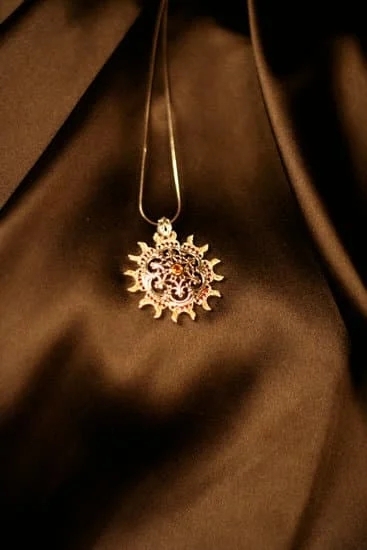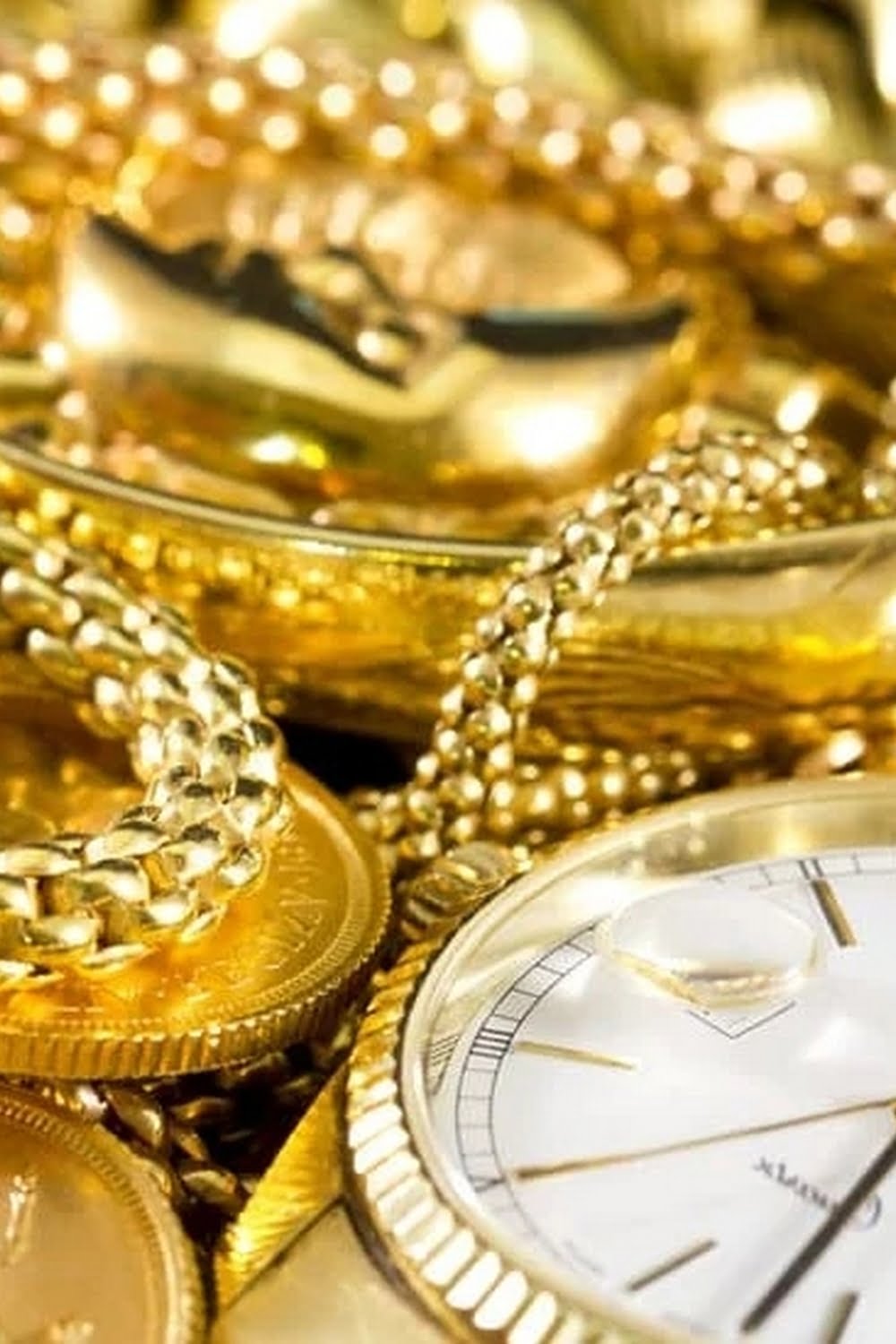When creating beautiful works of jewelry, it is important to consider which type of material is best for the job. Different types of jewelry materials produce different looks and requires different skills to carve and shape properly. Here, we will take a look at the most popular types of jewelry materials used and compare natural versus synthetic materials.
First, let’s discuss some of the natural materials utilized in jewelry making. The most popular among these are gems like diamond, sapphire, ruby and opal; precious metals like gold, silver and platinum; and other minerals such as mother-of-pearl and malachite. Natural materials can have a variety of colors and textures that give the pieces an interesting look. However, they can be expensive depending on the quality and rarity of the material used.
Next, let’s take a look at synthetic materials used for jewelry making, mainly items that are imitations or copies of natural stones and metals. Some examples are cubic zirconia (synthetic diamond), brass alloys with copper or tin instead of gold or silver, and plastic beads made from polymers or polystyrene pellets in various colors. Synthetic jewelry materials tend to be affordable since they are mass-produced but lack the unique qualities found in naturally formed gems or minerals.
In conclusion, when choosing material for a special piece of jewelry knowing whether to use natural or synthetic components will depend on budget limitations while still achieving an optimal finished product. Natural jewelry materials provide a distinct beauty while synthetic alternatives offer affordability without sacrificing visual appeal.
Precious Metals
Gold is the most sought after metal for jewelry due to its unique properties. Gold is a valuable and resilient metal that is easily shaped or molded and can be mixed with other metals to produce different colors. It also doesn’t corrode from water or oxygen making it long lasting and desirable.
Gold can be alloyed with other metals such as silver, zinc, nickel, and copper to form unique shades of yellow, white, pink and even green gold. Jewelers are able to identify the type of gold used in pieces of jewelry by examining the hallmark – which specifies the variety of gold and its purity level (24k being pure while 10k being least pure).
Silver has been worked with since ancient days due to its malleability and ability to retain color over time making it an attractive choice for jewelry. Similar to gold, silver also consists of alloys such as copper and nickel which allows silversmiths to create a range of colors depending on the ratio.
Due to its low monetary value compared with gold, silver is more commonly found in items such as earrings, necklaces, rings, bangles and pendants when compared with gold jewelry pieces. By looking for hallmarks such as.925 or STERLING on the piece you can quickly tell whether or not it is made from solid sterling silver.
Platinum has become increasingly popular despite being one of the most expensive precious metals available on the market today. Platinum is known for its durability thanks to its strength which allows it to remain scratch free longer than both Go ld and Silver when made into jewelry pieces like necklaces or rings.
Similar hallmarks will indicate purity – 900 (90% Pure) 950 (95% Pure) 999 (99% Pure). As platinum ages naturally this gives an item character compared with both silver or gold which can suffer from tarnishing over time without proper care & maintenance.
Synthetic Stones
Synthetic stones are man-made materials made to imitate the look and feel of genuine gems, making them an economical and practical choice. A few varieties of synthetic stones ranked in hardness include cubic zirconia, lab-created sapphires, rubies and emeralds, moissanite, and spinel. Many jewelry designers have begun using these materials as a cost-effective alternative to pricey natural gemstones. Synthetic stones share many of the same properties as natural gemstones without the added expense.
The major advantage of synthetics is the ability to produce indistinguishable copies at a fraction of the cost compared to their natural counterparts. Synthetics can also come in colors that do not traditionally exist in nature’s palette, like lime green emeralds or hot pink rubies.
Moissanite is one example of a synthetic stone that is increasingly popular due its durability and sparkle closely resembling diamonds with a lower price tag attached. The cheaper price point also makes it easier for people on a tight budget to purchase higher quality styles that use a mix of both real and synthetic elements for more affordable pieces.
On the other hand there are some drawbacks to synthetics when compared with natural stones. For instance, synthetics often show color inconsistencies or distracting imperfections easily detectable under a microscope. There is also usually quite a bit less variety available than what can be found with genuine gems since the production process requires manual labor instead of sourcing from existing sources from nature’s dynamic diversity.
Over time, plastic-based imitation replacements often degrade in quality over time as they yellow or turn cloudy with age resulting in short lifespan compared with genuine options.
Additionally valuable attributes such as rarity value will understandably be absent with artificially chosen types which helps determine pricing structures for natural gems over their man-made clones depending on sales situations these distinctions may not even be worth noting among shoppers if the benefits outweigh other considerations on how the item appeals versus competing alternatives in aesthetics or sentimentality.
Natural Stones and Crystals
Using natural stones and crystals in jewelry making has many benefits. Natural stones can come from a variety of origins, including meteors, plants, animals, and the earth itself.
Each stone offers unique characteristics that come with a range of healing properties. Using these various stones in jewelry allows a wearer to bring the energy and vibrations from them throughout their day, whether it be luck, protection, energy-balancing, or simply something to remember a special moment by wearing it on their wrist.
In order to correctly identify particular stones for your own custom made piece of jewelry start by familiarizing yourself with the aesthetics and varieties of different types of gems and crystals out there; this way you can decide which colors vibes suit your needs best.
Pay attention to their transparency level as some stones tend to look different when held up against light; certain colors will even change or seem more vibrant if they are surrounded by other colors which makes identification even more confusing at times.
Do not be afraid to explore new options when collecting your materials; ask questions while shopping in order to become better informed about where certain pieces come from such as notable mines or sources as this can help add less chance of receiving inaccurate data classification results or even identifying counterfeit items instead of authentic ones that were sourced ethically.
Knowing the source is a great resource for authenticating gems and crystals that have been exported abroad for sale so once you know what type of gemstone your looking for searching through reputable stores is the easier more reliable approach than hoping blindly through markets hoping the markings on products are actually accurate.
Pearls
Pearls are a classic piece of jewelry often given and received to mark special moments in life. They add a timeless elegance to any outfit. Pearls are one of two types of jewelry materials – natural and cultured.
Natural pearls come from the sea or river, and occur when a mollusk secretes nacre around an irritant over a period of time. Cultured pearls, on the other hand, are produced by human intervention. An irritant is surgically inserted into mollusks that have been raised in captivity; they then produce secrete nacre to coat it – creating pearl formation after several years.
When caring for pearls, there are several points to keep in mind: firstly, never wear them while swimming or bathing; the chlorine can cause harm to their delicate surface. Be careful of lotions and oils – these can stain the surface if left too long.
Avoid contact with cosmetics too – this can reduce shine; if you need to apply make-up before wearing your pearls be sure to wipe them down first afterwards with a soft cloth dampened slightly in water or alcohol-free cleaner solution specifically for pearls.
Do not store pearls in airtight plastic containers, as this causes moisture loss; instead try using soft pouches or muslin bags. Finally, period maintenance is beneficial since it helps maintain luster and shine; touch up polishing is recommended every couple months using a chamois cloth with light olive oil (jewelry cleaning solutions should not be used as it can damage the surface).
In conclusion, natural and cultured jewels bring glamour to any outfit or style and come in various sizes, shapes and colors making them very versatile accessories. While not difficult to care for, following proper maintenance instructions will help keep your pieces looking like new for years – ensuring you’ll always have timeless memories associated with them.
Glass
Glass is a unique and popular form of jewelry material because of its lightweight feel yet resilient strength. Additionally, glass can be cut and molded into countless shapes, giving artisans and hobbyists the freedom to create stunning colorful pieces. When it comes to glass jewelry, there are three popular types available: stained glass, fused glass, and mosaic glass.
Stained glass is created when pieces of colored or sliced-down art glass called “frit” is mixed with stained Resin to form an opaque solution that is applied over a plain piece of glass sandwiched between copper reheat foil. The edges are then grinded or cold foiled before curing in an oven; the finished product boasts cleanly defined lines, vivid colors and depth without any visible seams.
Stained glass jewelry is ideal for looking eye-catching when conditions are just right-it requires strong direct light source to show off its beautiful hues most effectively.
Fused Glass Jewelry is made by combining individual pieces of dichroic, textured, and transparent art into a single piece through the process of fusing two or more layers together at high temperatures until they meld into one solid object. The result is a harmonious blend of hues, textures, and patterns all in one single item.
With this method, a wide range of jewelry items can be made from earrings to necklaces to pendants. A major advantage of fused glass jewelry is that since individual pieces combined during the creation process can be placed more freely than traditional bricks used in stained glazing techniques; there’s greater artistic freedom here that translates into more creative freedom for personalized designs.
Lastly, Mosaic Glass Jewelry stands out due to its distinctive look as it involves arranging shards or tesserae which come in various sizes and shapes on top of one another like tiles which then become part of one larger solid piece when fastened together using grout or glue mix material.
This technique allows the artist the opportunity to work on details far more precisely than if they were creating mosaics with regular stones such as marble or pebbles; this makes it easier for them to turn ideas into concrete reality which translates well as jewelry that’s truly unique from necklaces down to designer earrings today.
Another great benefit with mosaic jewellery type compared with others would be that individual changeable parts involved in them remain attachable – so repurposing becomes possible if somebody wants something different in their jewelry collection later on down the line.
Metal Alloys
Metal alloys are a combination of different metals that have been melted together to create new materials. Jewelers use metal alloys to craft beautiful jewelry pieces with vibrant colors and intricate designs. As the metals are mixed together, various patterns and finishes can be created that can create dramatic effects or be used for utilitarian purposes.
The most common type of metal alloys used by jewelers is sterling silver, copper, and nickel. These three metals are combined together to create an alloy that is perfect for creating a wide variety of jewelry pieces. Sterling silver is known as the highest quality and most expensive metal alloy; its brilliance gives it a luxurious look and feel. Copper provides a reddish hue which adds elegance and sophistication to any piece, while nickel offers strength and durability.
When selecting jewelry made with metal alloys, it is important to know exactly what kind of alloy has been used in order to identify the best quality material. Silver-plated pieces tend to change color over time with exposure from light and air, while high-quality sterling silver pieces retain their beauty for years with proper care.
Additionally, certain metals can become brittle over time when exposed to different elements or chemical compounds, so looking for high-grade alloys should be an important consideration when selecting jewelry materials. Knowing the composition of the alloy will also tell you the relative strength of your jewelery piece; stronger materials might hold up better over time than weaker combinations.
Wood and Acrylic
Wood and acrylic are two popular materials used to create jewelry pieces, both offering their own unique textures and patterns. Natural wood pieces can be sanded, stained, or cut into any shape desired while acrylic is a man-made material that is created by combining plastics, resulting in a stronger and more reliable product.
When using natural wood to make a jewelry piece, the best bet is to use softer woods such as ash, maple, walnut, cherry or balsa. These types of woods are easier to sand and stain as well as being more malleable than some of the harder variants.
It’s important to note that though they may be softer woods they still need to be treated with respect and should be handled with care in order not to damage them during the hand crafting process.
To give it color or texture, wood can be sanded down with course-grade papers for a lighter hued finish or built up with finer-grade papers for an elevated finish; a soft brush can also help bring out the grain of the piece. Stains or dyes can then be used depending on how dark you’d like your finished product to look – just keep in mind that some colors may bleed over time if not properly sealed.
In addition to adding color and texture directly onto the surface of the wood itself you could add other materials like rhinestones or glass beads to add added elements of decoration.
Acrylic on the other hand is quite versatile and comes in many colors and styles which makes it great for creating jewelry pieces with geometric shapes including circles, triangles, squares and rectangles. This material is also very durable in comparison to its wooden counterpart so it makes for an excellent option when creating large pieces that require precise shapes and dimensions.
As a synthetic polymer all aspects of manipulation when working with this type of plastic – from cutting and sanding edges, drilling holes into its formwork – all has fewer difficulties compared to natural wood alternatives.
Conclusion
Jewelry making is an art form that requires careful selection and use of the right materials. Every material used in the crafting of jewelry offers something unique to the overall piece. You can find all different types of materials for your jewelry, from expertly cut gemstones to glass beads and metal charms, each with its own set of benefits and drawbacks.
The three primary categories of jewelry materials are precious metals such as gold, silver and platinum; semi-precious stones like amethyst, opal and jade; and synthetic materials like cubic zirconia or acrylic. Each type of material offers a unique look and feel to your pieces, and comes with its own characteristics that should be considered before selecting a specific material for you project.
Precious metals like gold, silver and platinum are often chosen for their beauty and durability, while semi-precious stones bring an array of colors and shapes to add visual interest to the jewelry. Synthetic materials offer more diversity in terms of design elements since they are created out of manmade substances that allow experimentation with unusual shapes and sizes.
Popular synthetic gemstones such as cubic zirconia offer cost effective alternatives to using higher priced metals or stones such as diamonds or emeralds.
When selecting the best materials for your project it’s important to do your research first on cost, quality, availability and design potential. You can also easily compare prices between outlets if researching online or request samples from vendors if working at a traditional brick-and-mortar store in order determine what best suits your needs before buying any supplies.
Ultimately creating beautiful pieces takes time so be patient during the research process – this will result in long lasting pieces with stunning results.

Welcome to my jewelry blog! My name is Sarah and I am the owner of this blog.
I love making jewelry and sharing my creations with others.
So whether you’re someone who loves wearing jewelry yourself or simply enjoys learning about it, be sure to check out my blog for insightful posts on everything related to this exciting topic!





